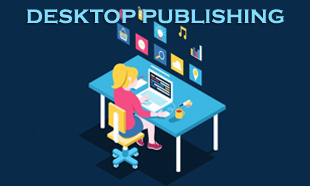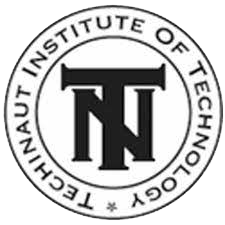0
DESKTOP PUBLISHING GD Computer Class, located in Una, Gir Somnath, Gujarat, offers a specialized 6-month course in Desktop Publishing (DTP). …
DESKTOP PUBLISHING
GD Computer Class, located in Una, Gir Somnath, Gujarat, offers a specialized 6-month course in Desktop Publishing (DTP). This program, run as a Techinaut Institute of Technology franchise is designed to equip students with the skills and knowledge required to create professional-quality publications using desktop publishing software. The course is not just about theory but also emphasizes hands-on training, allowing students to actively enhance their design and layout skills. The comprehensive curriculum covers computer fundamentals, operating systems, printing processes, and advanced DTP tools, ensuring a well-rounded learning experience.
THE OBJECTIVE OF THE COURSE:
The primary objective of the Desktop Publishing course at GD Computer Class is to enable students to develop proficiency in creating and designing various publications using desktop publishing software. By the end of the course, students will be able to:
- Understand the fundamentals of desktop publishing and printing processes.
- Utilize desktop publishing software effectively to create professional-quality publications.
- Design and layout documents such as brochures, flyers, newsletters, and magazines.
- Enhance creativity and aesthetic sense in graphic design and typography.
- Prepare digital files for printing and distribution.
COURSE OVERVIEW:
Section 1: Computer Fundamentals
1. Computer Fundamentals:
Our course begins with an exciting introduction to the basic concepts and components of a computer system. Students will dive into the world of hardware, exploring components such as the CPU, monitor, keyboard, and mouse. They will also gain a fascinating insight into software, operating systems, and the pivotal role of computers in desktop publishing.
Section 2: Operating System: DOS and MS Windows
2. Operating System: DOS and MS Windows:
This module provides an overview of operating systems, focusing on MS-DOS and MS Windows. Students learn basic commands and operations in MS-DOS for file management and system navigation. They also explore the graphical user interface (GUI) of MS Windows for efficient operation.
Section 3: Printing Process
3. Printing Process:
Students learn about the printing process and various printing technologies used in desktop publishing. They gain an understanding of prepress preparation, color management, resolution requirements, and file formats for printing. Practical exercises familiarize students with preparing digital files for printing.
4. DTP Fundamentals:
This module covers fundamentals of desktop publishing, including layout principles, typography, color theory, and design aesthetics. Students learn about page layout techniques, grid systems, alignment, and visual hierarchy. They explore design principles to create visually appealing publications.
Section 5: Using MS Word
5. Using MS Word:
Students learn to utilize Microsoft Word for basic desktop publishing tasks. They explore page setup, text formatting, paragraph styles, and inserting images and graphics. Practical exercises focus on creating simple documents with basic layout and design elements.
Section 6: Adobe Pagemaker
6. Adobe Pagemaker:
Students are introduced to Adobe Pagemaker, a popular desktop publishing software. They learn about Pagemaker's interface, tools, and features for creating layouts, designing templates, and managing text and graphics. Practical exercises involve creating multi-page documents such as newsletters and brochures.
Section 7: QuarkXPress
7. QuarkXPress:
This module focuses on QuarkXPress, another industry-standard desktop publishing software. Students learn about QuarkXPress's layout tools, typography controls, and advanced features for designing complex publications. Practical exercises involve creating magazine layouts, advertisements, and booklets.
Section 8: Using CorelDRAW
8. Using CorelDRAW:
Students gain proficiency in CorelDRAW, a vector graphics editor for graphic design and illustration. They learn about CorelDRAW's tools and features for creating logos, photographs, and vector graphics. Practical exercises focus on designing artwork for print and digital media.
Section 9: Adobe Illustrator CS
9. Adobe Illustrator CS:
This module covers Adobe Illustrator CS, a vector graphics editor for creating scalable graphics and illustrations. Students learn about Illustrator's tools, panels, and features for drawing, painting, and editing vector artwork. Practical exercises involve creating logos, icons, and illustrations.
Section 10: Adobe Photoshop CS
10. Adobe Photoshop CS:
Students learn to utilize Adobe Photoshop CS for image editing and manipulation tasks. They explore Photoshop's tools, filters, and effects for retouching photos, creating digital artwork, and designing graphics for print and web. Practical exercises involve photo editing, image compositing, and creating digital collages.
CONCLUSION:
The Desktop Publishing course at GD Computer Class offers comprehensive training in creating professional-quality publications using desktop publishing software. Through a structured curriculum covering computer fundamentals, operating systems, printing processes, and advanced DTP tools, students undergo hands-on training to enhance their design and layout skills. By the end of the course, students will have the ability to design and produce various types of publications, from brochures and flyers to newsletters and magazines. This course is designed to effectively prepare students for careers in the dynamic fields of graphic design, advertising, and publishing industries, offering exciting opportunities to unleash their creativity in desktop publishing. Join us at GD Computer Class and embark on a journey to a promising career.


